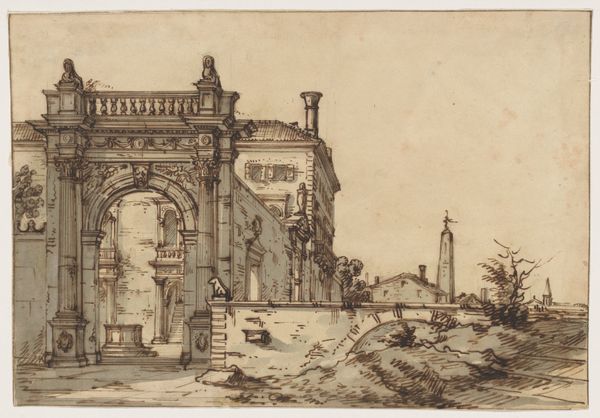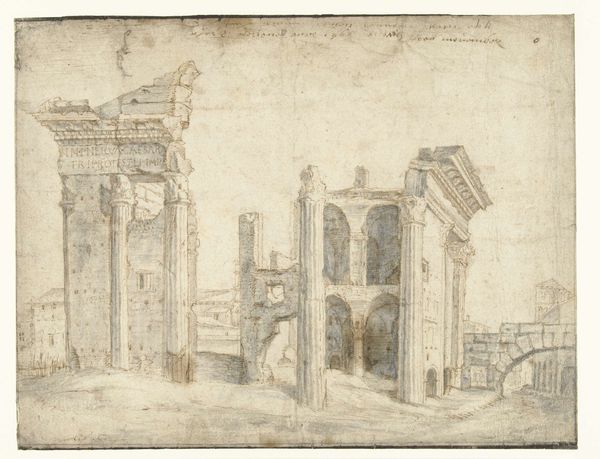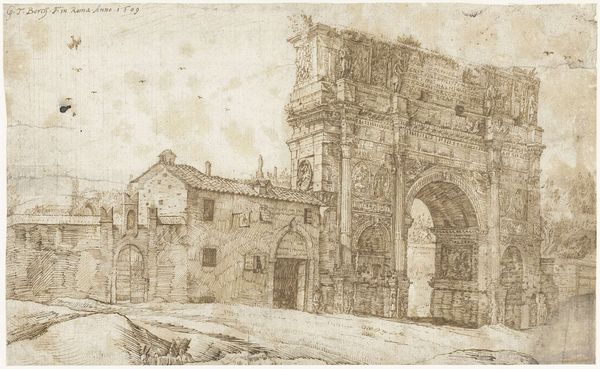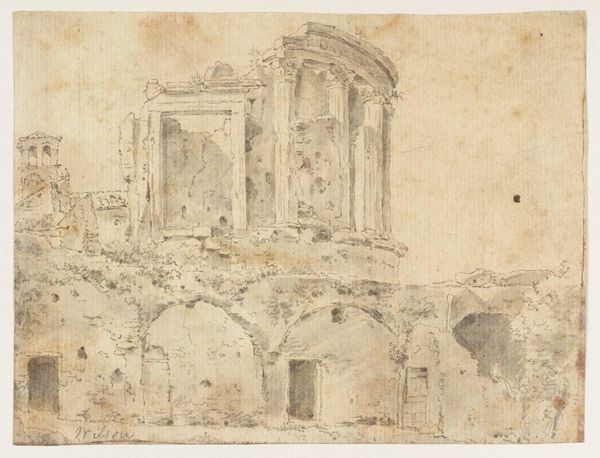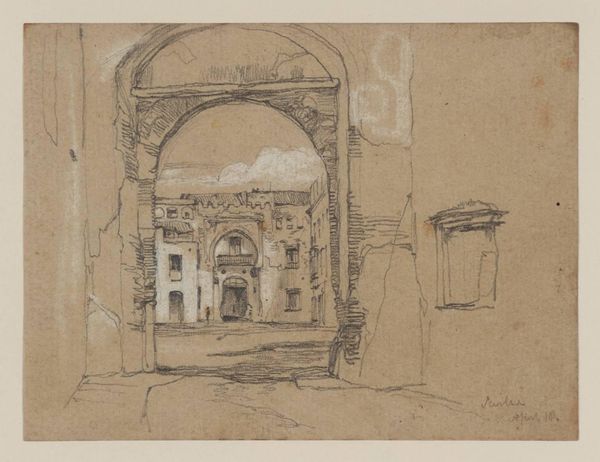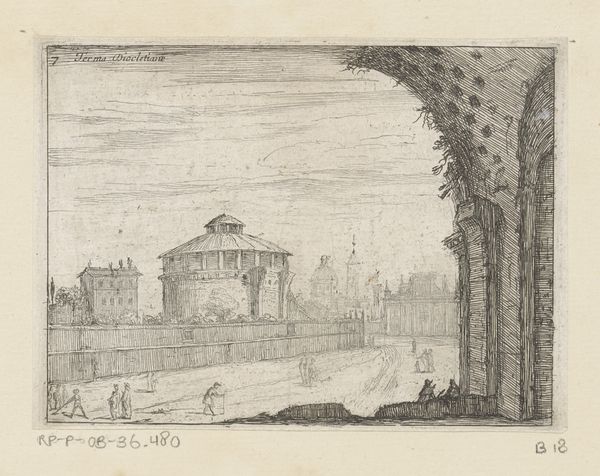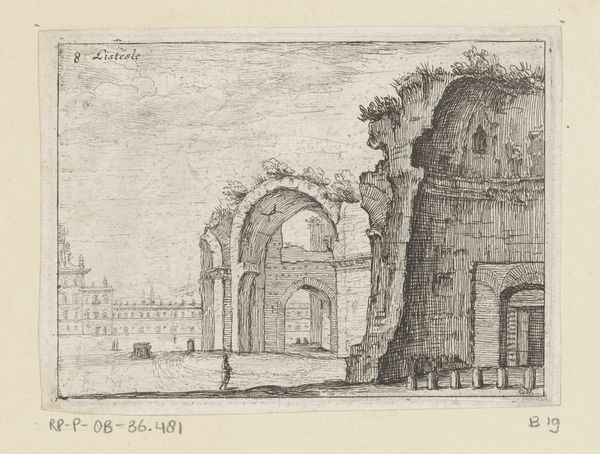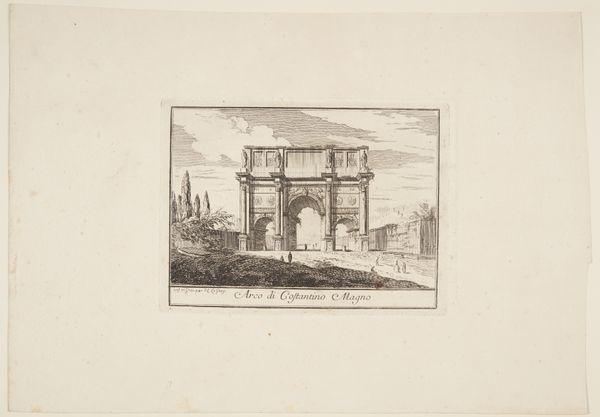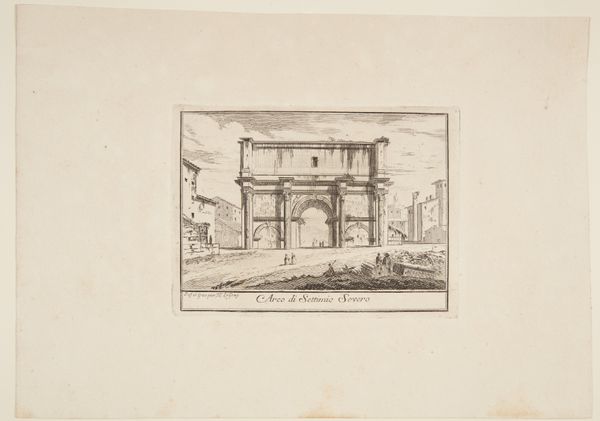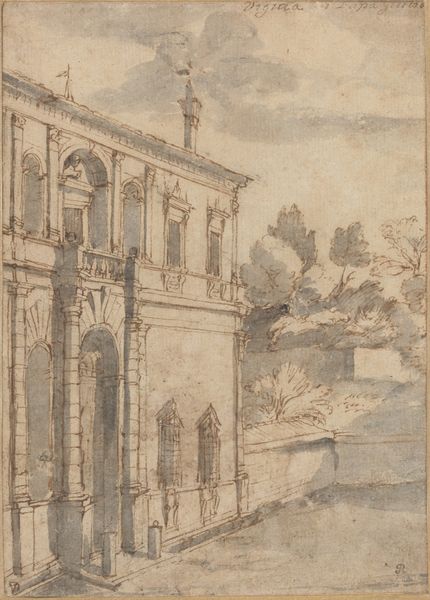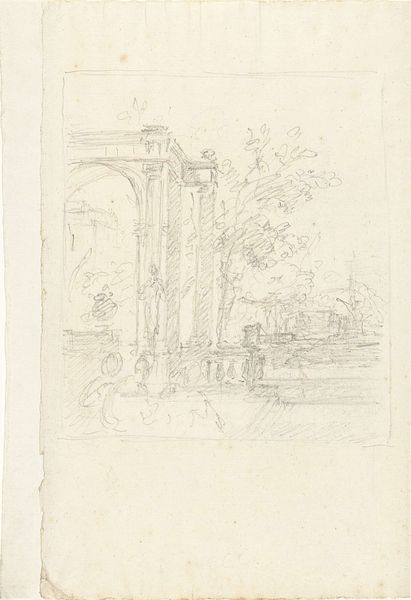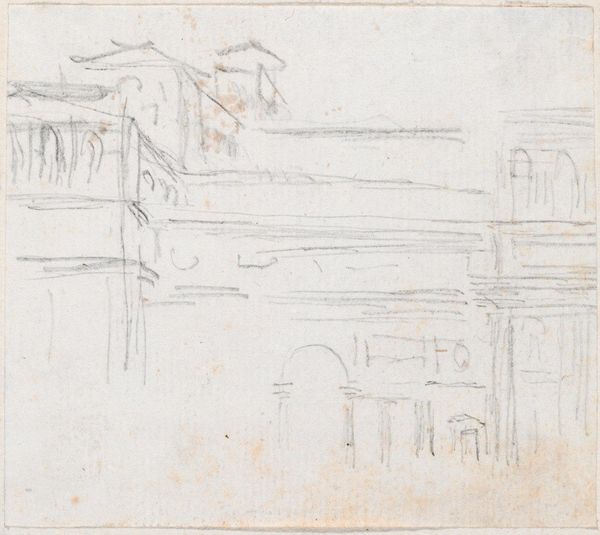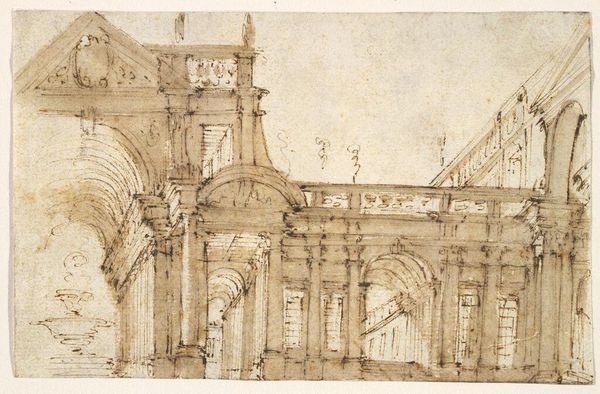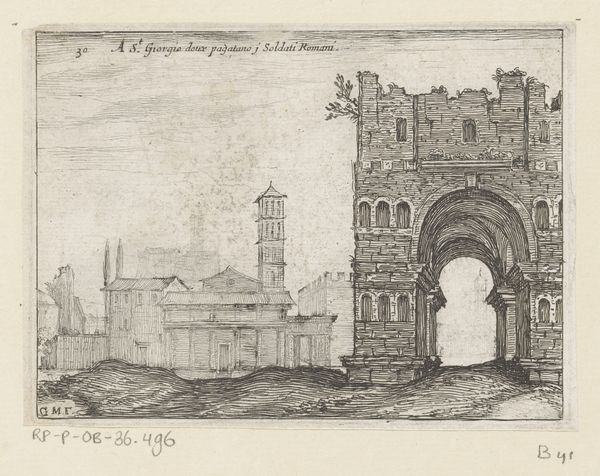
Dimensions: 9.5 x 15.3 cm (3 3/4 x 6 in.)
Copyright: CC0 1.0
Curator: What a beautifully understated sketch! Claude Lorrain’s “Arch of Constantine,” now housed at the Harvard Art Museums, captures the monument’s grandeur in miniature, measuring just 9.5 by 15.3 centimeters. Editor: It's incredibly evocative. The soft sepia tones create a dreamlike quality, almost as if we're seeing Rome through a haze of memory. The Arch looms, a symbol of power rendered with delicate strokes. Curator: Indeed. Lorrain, deeply influenced by the Roman Campagna, often depicted classical ruins. But it's more than topographical accuracy. Consider the politics of imagery here: How does he represent Roman authority through a somewhat decayed structure? What does it say about shifting powers? Editor: And thinking about that representation of power, who does it serve? Lorrain's vision, while aesthetically beautiful, is inevitably filtered through his own socio-political lens. Are we truly seeing the Arch, or a carefully constructed image of it for a specific audience? Curator: A valid critique. The context of this drawing—likely a study for a larger painting— reveals how artists like Lorrain shaped perceptions of antiquity for their patrons and the broader public. Editor: Food for thought! The image continues to prompt questions about history, power, and the subtle ways art shapes our understanding of both.
Comments
No comments
Be the first to comment and join the conversation on the ultimate creative platform.
